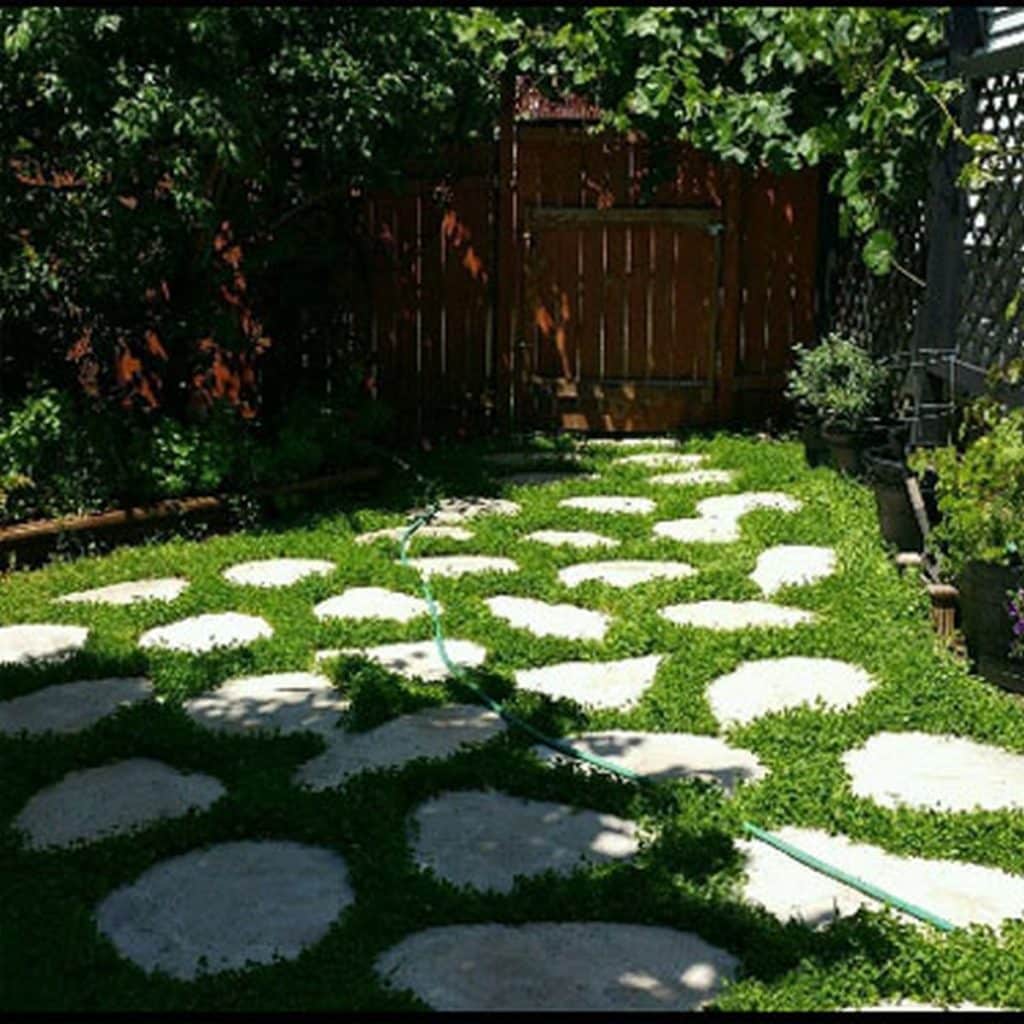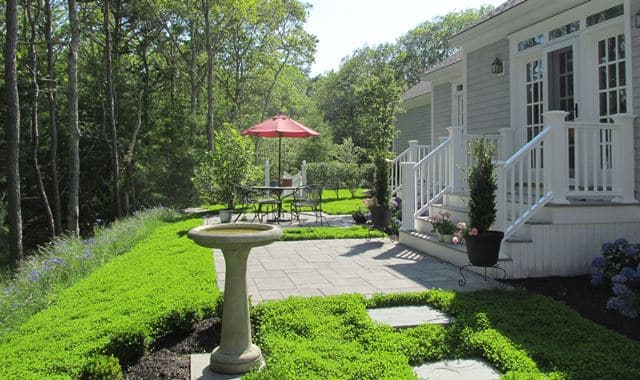Lawns. Depending on who you talk to, it seems we can’t live with them and we can’t live without them. If you live in an area where water can be scarce, like I do in Southern California, plenty of people insist you can do away with lawns.
There’s something about a swath of green that calms and cools you, though. Research even shows that turf does a great deal for our landscapes and earth, including cooling the environment, cleaning the air, improving and restoring the soil and preventing erosion. And it just feels good to go barefoot on the lawn.
As always, if you look to Mother Nature with a quandary, she’ll answer. That’s what some forward-thinking companies have done in recent years, like Outsidepride. They offer Miniclover (Trifolium repens) for lawns. This perennial clover—not to be confused with invasive White Dutch Clover—grows four inches tall, making it an ideal lawn alternative or addition to your current lawn. It is aggressive enough to fill in bare spots in the lawn, but not take over.

(Outsidepride)
In addition to producing a bright green, eye-candy lawn, Miniclover features a variety of other benefits, which include:
Nitrogen fixer. This means that Miniclover takes nitrogen from the air and “fixes” it in your soil. The result is less need for fertilizing.
Prevents weeds. Miniclover pushes out weeds as it grows via stolons (stems that grow horizontally along the ground).
Low maintenance. You can mow miniclover, which tolerates low mowing heights, or simply let it grow, as it doesn’t grow tall and unwieldy.

(Outsidepride)
Thrives in sun to partial shade. Unlike some turfgrass types that do poorly in part-shade, Miniclover does quite well.
Drought tolerant. Clover has longer roots than regular turfgrass, which means it can access more water. It will also tolerate wet conditions.
Stands up to foot traffic. Miniclover has superior wear tolerance and does well in compacted soil.
Makes an excellent groundcover. If you want a plant that will fill in bare spots in the landscape, Miniclover makes a great groundcover. Grow it on its own, or because of its adaptability and ability to grow in a wide variety of conditions, you can easily combine it with other groundcover plants, such as evergreen ginger, ivy, thyme, ajuga, lamium and creeping phlox.
Julie Bawden-Davis is a garden writer and master gardener, who since 1985 has written for publications such as The American Gardener, Organic Gardening, Wildflower, Better Homes and Gardens and The Los Angeles Times. She is the author of seven books, including Reader’s Digest Flower Gardening, Fairy Gardening, The Strawberry Story, and Indoor Gardening the Organic Way, and is the founder of HealthyHouseplants.com.

